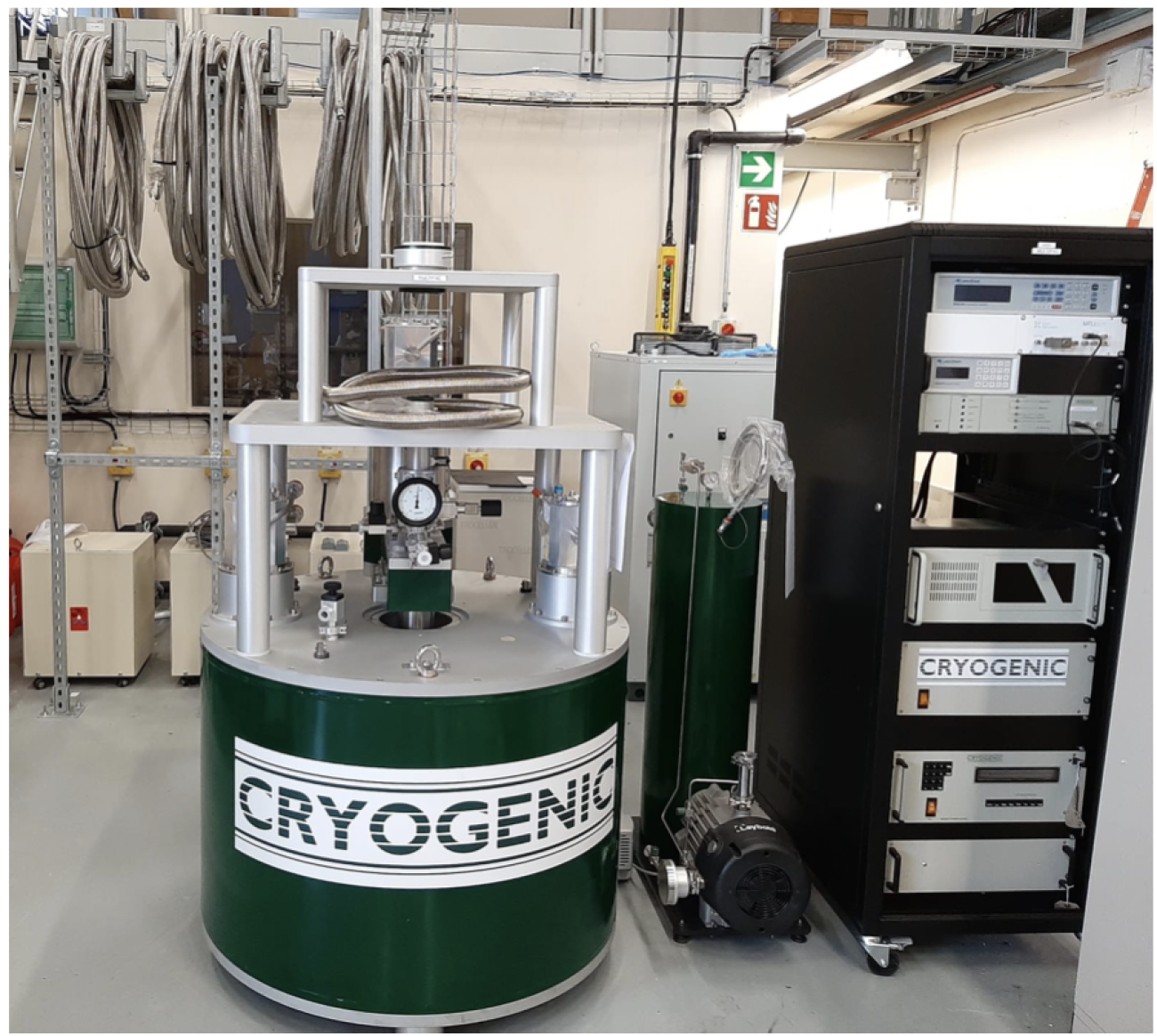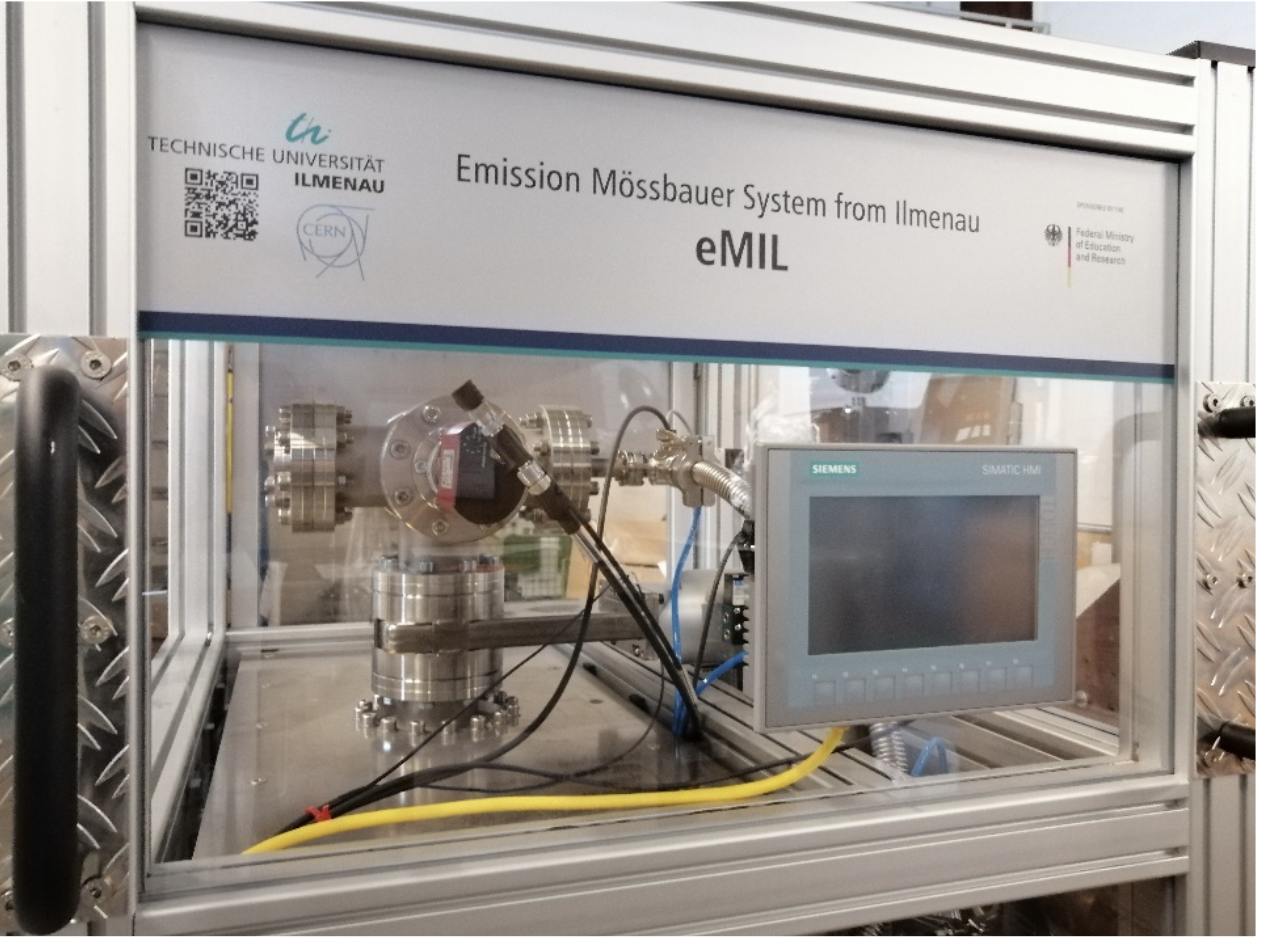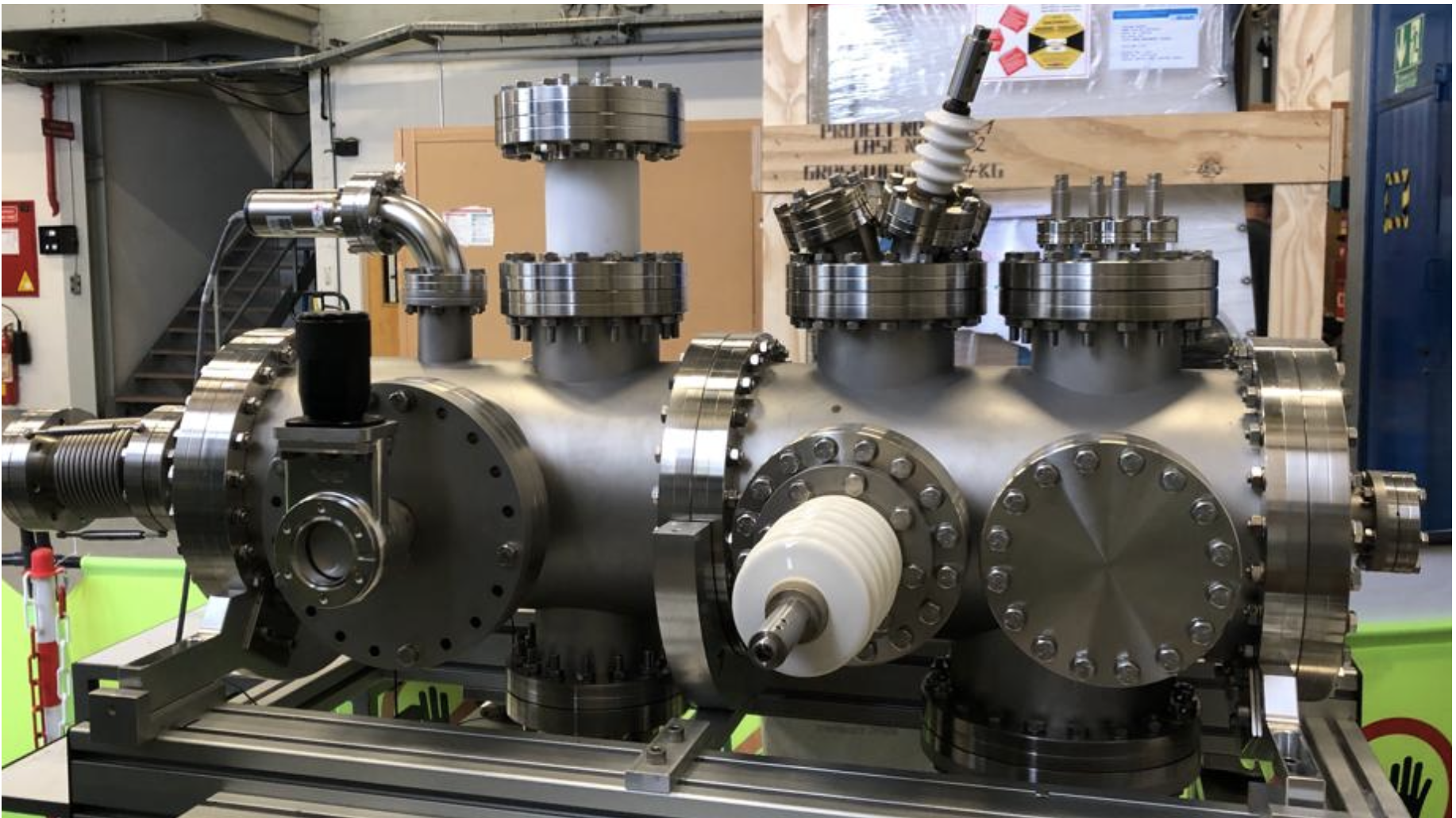ISOLDE: On the frontiers of materials science for a sustainable future

Nowadays, one of the most important issues that human beings are facing is the fact that reducing carbon emission is extremely necessary. New materials for a sustainable future are required for the world to become climate neutral. The huge demand for innovative hard magnetic materials, which will be used in the new generation of “green” technology, such as motors, generators, wind power, e-mobility, requires new characterization techniques. The materials science research community at ISOLDE-CERN got a boost with the scientific contribution of the EP department and the German Federal Ministry of Education and Research (BMBF) with four new versatile devices to characterize new materials.
The brand-new Multifunctional Perturbed Angular Correlations (MULTIPAC) setup [INTC2020] [INTC2023] (see top image) consists of an exclusive cryogenic-magnetic equipment that simultaneously allows measuring magnetic as well as ferroelectric properties of materials by means of time-differential perturbed angular correlation [SCH2017].
The cryogenic system includes the digital PAC equipment with the newest Acqiris digitizers, LaBr3 scintillation crystals and Multi-Pixel Photon Counter (MPPC) detectors. The detection system is made of special equipment that is operational in high magnetic fields, i.e., up to 8.5 Tesla. These components are fully automatic and rely on user-friendly software and robust devices to guarantee that the equipment will serve our materials science community over the long term.
The emission Mössbauer system from ILmenau (eMIL) [ZYA20] (Figure 2) is an advanced emission Mössbauer Spectrometer, which allows measurements in versatile conditions and comprises user-friendly software and multi-purpose hardware. The apparatus works impeccably when connected to the ISOLDE beam lines, without reconfiguration or significant adjustment by the users.

Figure 2: Picture of eMIL vacuum chamber taken at ISOLDE-CERN, 2023.
The eMIL setup allows measurements to be carried out from 100 K to 1100 K. Moreover, the experiments can be performed under high-frequency light irradiation, magnetic fields up to 2.5 Tesla and for the study of single crystals, it is possible to perform angular-dependent measurements. The equipment was successfully used for the first time last year, serving the ISOLDE active experiments of Emission Mössbauer spectroscopy. eMIL can be used together the new emission Mössbauer Magnetic Analyser (eMMA) [SCH20], which comprises a high field magnet with a fast field variation. In addition, a heater and a sample manipulator stage are available, which supports the identification of atomic and nanoscale effects producing the macroscopic magnetic properties of innovative magnet materials.
The new Apparatus for Surface physics CERN’s Ion Implantation (ASCII) setup [INTC2023] (Figure 3) is a chamber used for characterizing samples surface and interface of materials [KOE22]. It operates under ultra-high vacuum conditions of 1 x 10-9 mbar, allowing for in situ hyperfine interactions measurements. The setup includes two sample manipulators that can heat samples to temperatures above 800 K or cool down to cryogenic temperatures using liquid nitrogen. There is a ceramic heater reservoir for liquid nitrogen and appropriate thermocouple sensors (type K and T) for precise temperature control. Additionally, PAC or Mössbauer detectors can be placed in the chamber for measurements of air-sensitive systems or experiments involving short-lived isotopes that need to be measured immediately upon implantation.

Figure 3: Picture of the ASCII main component taken at ISOLDE-CERN, 2024.
With a focus on atomically thin surface layers and interfaces, the ASCII setup was developed with ultra-low energy (ULE) ion implantation capabilities. This expansion vastly improves its ability to extract information on nanostructures in the sub-nanometer range. To better understand the local properties of 2D materials, it is necessary to face significant experimental challenges. In 2D materials, many techniques cannot detect the monolayer, and surface-sensitive techniques like Raman, X-ray photoelectron spectroscopy provide information that is averaged over a large film area. For magnetic, multiferroics, surfaces and interfaces, the local properties are particularly important because they mediate and determine many interesting magnetic and electrical properties.
Since the main goal of all setups is to unravel the hyperfine interactions of multiferroic and magnetic systems, it is necessary to verify how the peculiar experimental conditions ordering influences the data. Such scenario is also interesting to characterize phase transitions for distinct values of temperature (generally low temperatures) and/or in the presence of a magnetic field. ISOLDE-CERN is the welcome home for the new devices, as the facility delivers the most pure and efficient radioactive isotope beams for materials science and can count on a long-established community of scientists.
Funding acknowledgment: We acknowledge the financial support received from the Federal Ministry of Education and Research (BMBF) through grants 05K16PGA, 05K22PGA, 05K16SI1, 05K19SI1 “eMIL” and “eMMA” and 05K19MG1. We also acknowledge the support provided by the EP department and by the European Union’s Horizon Europe Framework research and innovation programme under grant agreement no. 101057511 (EURO-LABS).
References
[INTC2020] D. C. Lupascu, J. Schell, T. T. Dang, M. Schmuck. CERN-INTC-2020-011 / INTC-I-212. Letter of Intent to the ISOLDE and Neutron Time-of-Flight Committee (2020). https://cds.cern.ch/record/2706092/files/INTC-I-212.pdf
[INTC2023] J. H.-Schell, D. C. Lupascu, et al. CERN-INTC-2023-012 / INTC-I-249. Letter of Intent to the ISOLDE and Neutron Time-of-Flight Committee (2023). https://cds.cern.ch/record/2845935/files/INTC-I-249.pdf
[SCH17] J. Schell, P. Schaaf, and D. C. Lupascu, American Institute of Physics 7, 105017 (2017). https://doi.org/10.1063/1.4994249
[ZYA20] D. Zyabkin, U. Vetter, F. M. A. Linderhof, H. P. Gunnlaugsson, P. Schaaf. Nuclear Instruments and Methods in Physics Research Section A: Accelerators, Spectrometers, Detectors and Associated Equipment, 968, 163973, 2020. https://doi.org/10.1016/j.nima.2020.163973
[SCH20] P. Schaaf, D. Zyabkin and J. Schell, CERN-INTC-2020-008 / INTC-I-211 Letter of Intent to the ISOLDE and Neutron Time-of-Flight Committee (2020). https://cds.cern.ch/record/2705975/files/INTC-I-211.pdf
[INTC2023] K. van Stiphout, et al. CERN-INTC-2023-006 / INTC-I-248 Letter of Intent to the ISOLDE and Neutron Time-of-Flight Committee (2023). https://cds.cern.ch/record/2845908/files/INTC-I-248.pdf
[KOE22] K. van Stiphout, L.-A. Lieske, M. Auge and H. Hofsäss, Crystals 12(5), 626 (2022). https://doi.org/10.3390/cryst12050626
